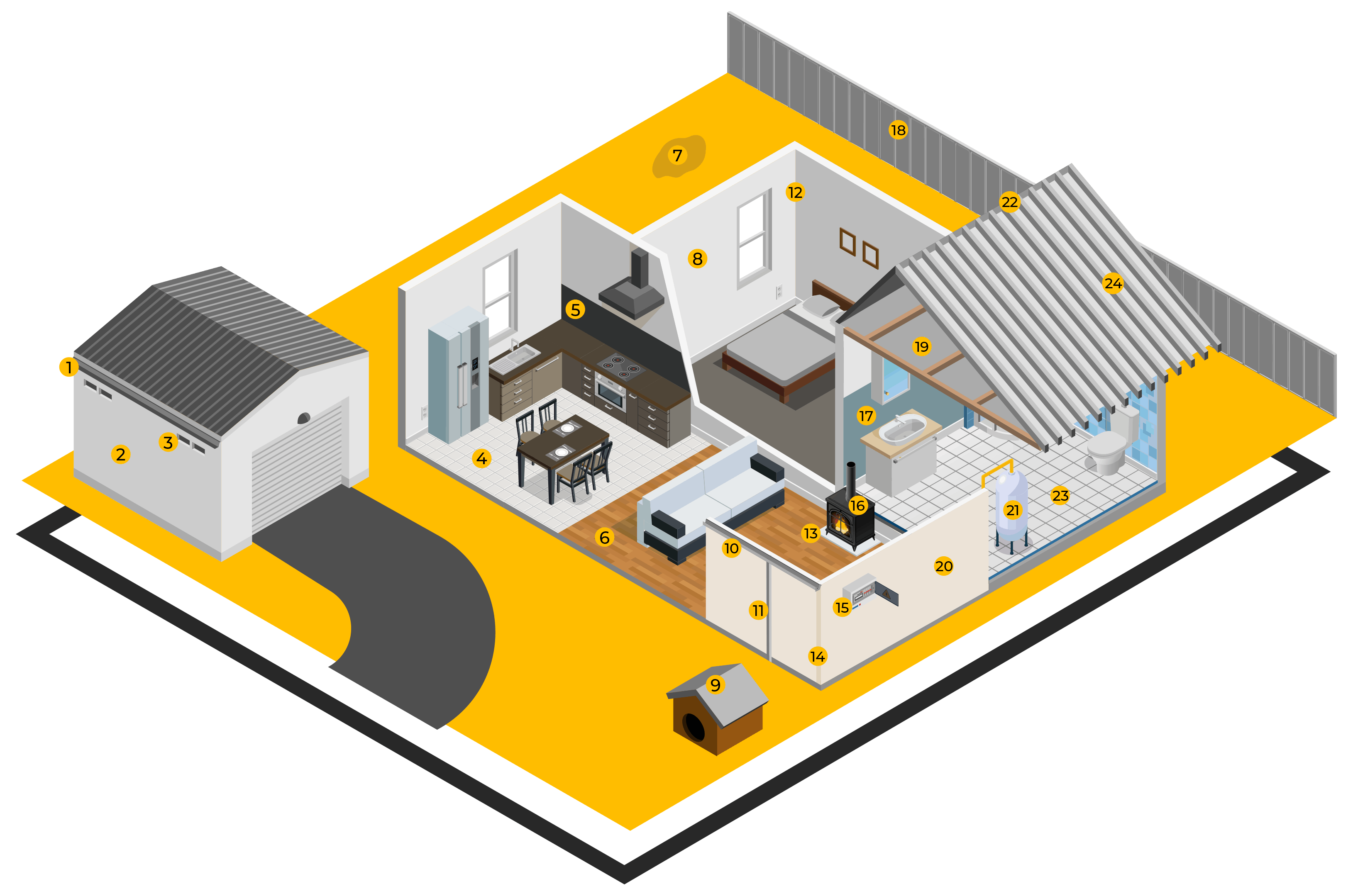Send an enquiry
We respond to enquiries within 24 hours.
What Is Asbestos?
Asbestos is a naturally occurring mineral fibre that was widely used within the construction industry due to its fire-retardant properties. Asbestos containing materials can be categorised as friable or non-friable (bonded asbestos). Both friable and non-friable asbestos pose a significant health risk if the materials are not properly maintained or carefully removed.
Between 1950s to 1970s, Australia had one of the highest use of asbestos materials per capita in the world. A lot of this asbestos still remains in many residential, commercial and industrial buildings to this day.
One third of Australian homes contain asbestos containing materials (ACMs).
If you live in a house that was built before the 1990s, it is likely that asbestos containing materials is present. If your house was built between 1990-2004 is it unlikely but not unheard of to contain asbestos containing materials.
Non-friable Asbestos (Bonded Asbestos)
This type of asbestos fibres are ‘bonded’ into other materials such as cement. Bonded asbestos is the most common type of asbestos. If you are concerned that your home or building may have asbestos, please call us for a free call out inspection and quote. Your safety is our priority, so we recommend you take action toward securing a safe environment for you and your family.
Health Risks of Asbestos
Exposure to asbestos poses large health risks. When materials containing asbestos are disturbed, tiny asbestos fibres are released into the air. The inhalation of these asbestos fibres has been directly linked to increase the cause of a number of diseases including:
- Asbestosis
- Lung Cancer
- Pleural disease
- Mesothelioma.
Even short-term exposure can be pose serious risk, with a single fibre having the potential to develop into serious long term harm.
Asbestos is considered a human carcinogen and can take anywhere from 10 to 50 years for symptoms to develop and become detectable. Due to these health risks, it is imperative that professionals assess any areas you feel may have asbestos. Don’t take the risk when dealing with such a harmful substance. It’s just not worth it. If you feel you are exposed to or living in an environment that may contain asbestos containing materials, get in touch with a HRC professional and we will send someone to you to assess for free. Your safety is our responsibility.
Where Asbestos Could be Found In Your Home

Most common areas:
- Eaves and gable ends
- Garage, sheds and external toilets
- Internal and external ventilators
- Vinyl floor tiles
- Splashbacks
- Backing of vinyl sheet flooring and carpet underlay
- Buried and dumped waste materials
- Internal walls and ceilings
- Dog Kennels
- Gutters
- Downpipes
- Internal angle mouldings
- Insulation below wood heaters
- External angle mouldings
- Backing for electrical meter boards
- Flues to fireplaces
- “Tilux” marble finish wall panels
- Fences
- Loose fill insulation in roof cavities
- Wall sheeting
- Insulation for hot water pipes and tanks
- Ridge capping
- Compressed asbestos sheet cement flooring
- Corrugated asbestos cement roofing
Types of Asbestos?
Understanding Asbestos, its a naturally occurring mineral, poses significant health risks, leading to various illnesses and diseases. Recognizing its types and locations is crucial, especially in Sydney, Australia, where historical use in construction was prevalent.
There are 6 forms of Asbestos
Chrysolite (White Asbestos): The most common type, comprising over 95% of global asbestos use. Generally found in roofs, ceilings, walls, floors, seals, insulation, and guttering systems in residential and commercial buildings.
Amosite (Brown Asbestos): Highly hazardous but less common than white asbestos. Present in chemical insulation, cement, gaskets, and roofing materials.
Actinolite Asbestos: Dark-coloured with sharp needle-like fibres. Contains minerals like calcium, iron, silicon, and magnesium.
Anthophyllite Asbestos: Rare, usually yellowish-brown. Found in cement and insulation materials.
Crocidolite (Blue Asbestos): Among the most dangerous types, linked to numerous health issues. Limited commercial use due to poor heat resistance, but found in some cement and insulation materials.
Tremolite Asbestos: High heat resistance and versatile use, from milky white to dark green. Present in paint, sealants, insulation, and roofing.
If you suspect to have any Asbestos Materials present in your Sydney home, get in touch for your free quote.
Hazardous Removal Company?
Why choose
Quick turn-around.
Our dedicated team of experienced professionals are fast and efficient while maintaining safety as priority.
Safe & professional work practice.
Safety of our clients and workers is paramount to our service. We ensure all work is conducted to current safe work NSW current safety standard.
Quality services.
Ensuring customer satisfaction and quality of work through every stage of the project.
24-hour response time.
We respond to all enquiries within 24 hours.

